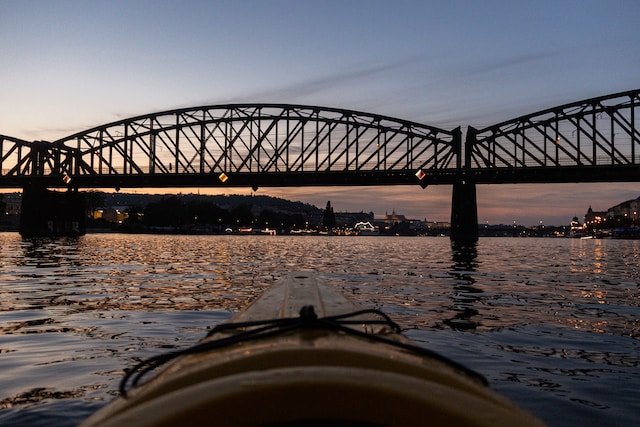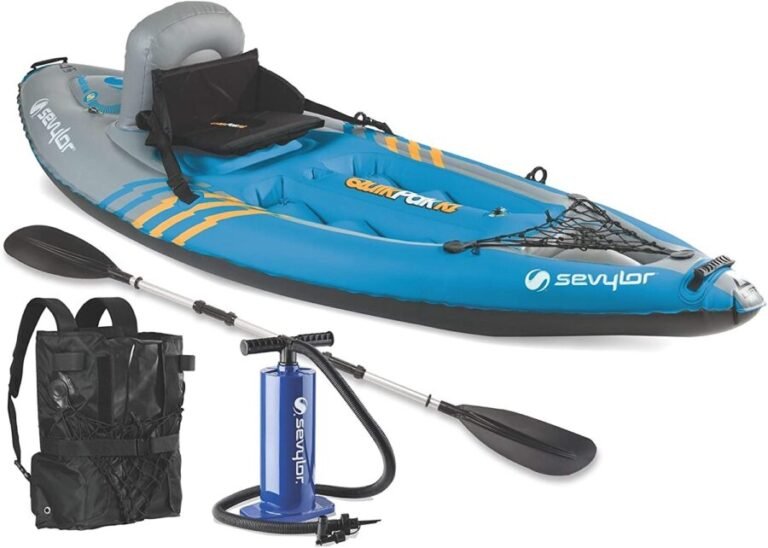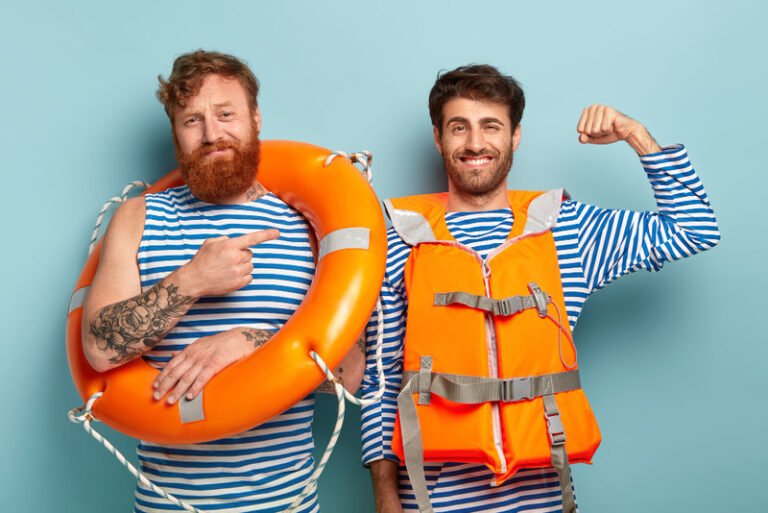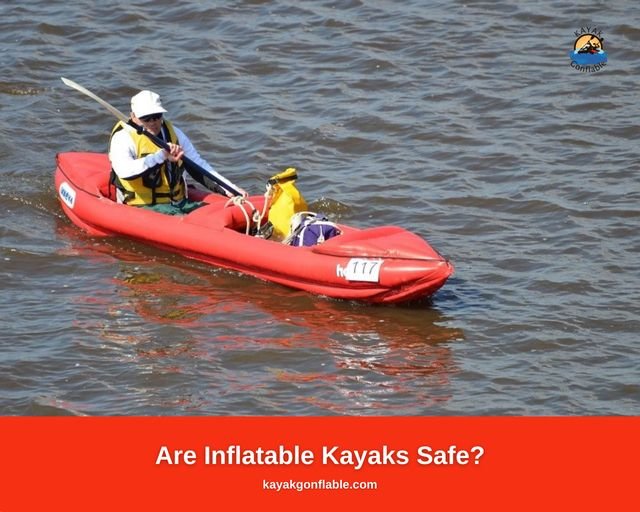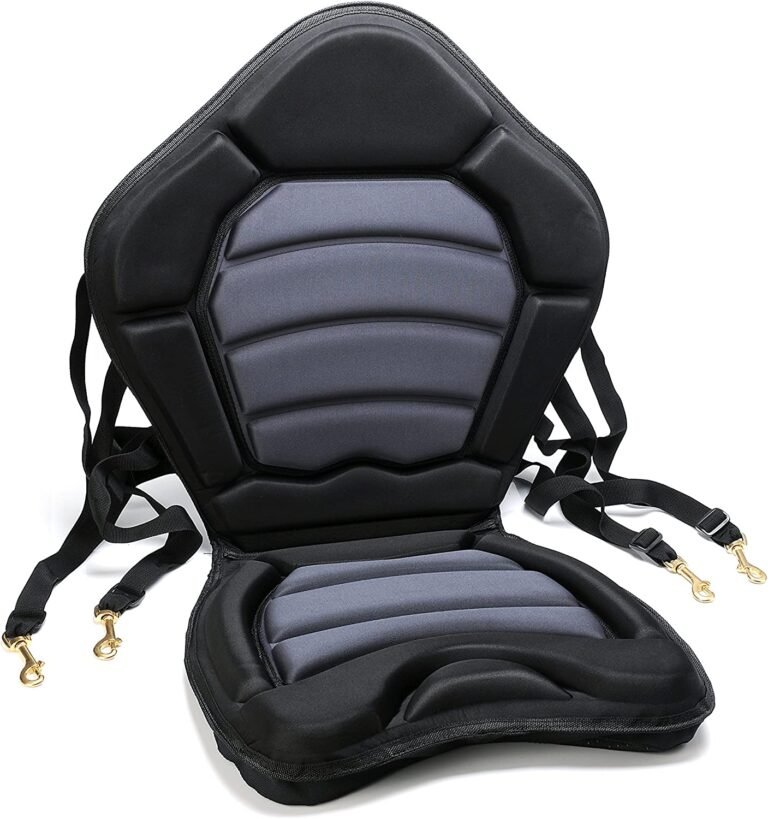What to Wear Kayaking in Spring

In the spring, the days grow longer, the weather warms up, the natural world awakens, and waterways beckon us to explore their beauty. The sight of blossoming vegetation, chirping birds, and the tranquil sound of the water beneath your kayak make springtime kayaking an unforgettable experience.
However, it’s crucial that you dress adequately if you want to explore and take in the freshness of the waters while paddling a kayak. Wearing the appropriate clothing guarantees your safety on the water and adds to your comfort.
To ensure you can completely appreciate the joys of this season on the water, we’ll go into the essentials of what to dress when kayaking in spring in this guide.
The Appeal of Spring Kayaking
Spring heralds the reawakening of nature after the cold winter months. The trees are adorned with fresh green leaves, and colorful flowers bloom along the banks of rivers and lakes. Kayaking during this season allows you to witness this transformation up close, providing a sense of connection to the natural world.
Spring brings moderate temperatures, making it an ideal time to paddle. The chilly bite of winter has faded, and the stifling heat of summer has yet to arrive. The pleasant weather encourages extended outings on the water.
Kayaking in the spring gives a more serene and tranquil experience than it does during the busier summer months. Enjoying the peace and quiet of the outdoors without the throng of people offers a calm diversion from the daily grind.
Dressing for Safety and Comfort
Proper attire is paramount when kayaking in spring. The combination of cool waters and varying weather conditions demands a thoughtful approach to dressing. Here’s what you need to consider:
Layering
- Base Layer
- Start with a moisture-wicking base layer to keep sweat away from your skin.
- Choose materials like synthetic blends or merino wool, which retain warmth when wet.
- Insulating Layer
- Add an insulating layer to trap warmth. Fleece jackets or vests are excellent choices.
- Opt for garments that provide warmth without excessive bulk, allowing freedom of movement.
- Outer Layer
- Invest in a waterproof and windproof shell jacket to protect against rain and wind.
- Look for breathable options to prevent overheating during exertion.
Bottoms
- Pants
- Wear quick-drying, water-resistant pants or neoprene wetsuit pants to keep your lower body warm.
- Ensure they allow for unrestricted movement and are easy to roll up if needed.
- Footwear
- Choose neoprene booties or water shoes to protect your feet and provide traction on slippery surfaces.
Accessories
- Headwear
- A brimmed hat or beanie can shield you from the sun or retain heat, depending on the weather.
- Gloves
- Neoprene gloves are ideal for maintaining dexterity while keeping your hands warm.
- PFD (Personal Flotation Device)
- Always wear a properly fitted PFD for safety. Spring waters can be cold and challenging.
- Sun Protection
- Don’t forget sunscreen, sunglasses, and lip balm with SPF to shield against UV rays.
Understanding Spring Weather
Spring is a season of change, with a broad spectrum of weather that might differ significantly depending on where you live. Knowing the springtime weather patterns is essential to choosing appropriate gear and having a safe kayaking adventure.
Temperature
Spring temperatures can fluctuate significantly. Early spring may still have chilly mornings and evenings, with daytime highs gradually warming up. As the season progresses, temperatures become milder, making it more comfortable for outdoor activities.
During cooler early spring days, it’s essential to layer appropriately. The cold water can be a shock if you capsize, so wear insulating layers and consider a wetsuit or drysuit for added warmth.
As temperatures rise, you can transition to lighter clothing layers. Still, be prepared for temperature fluctuations, especially if you’re kayaking early in the morning or late in the evening.
Precipitation
Spring often brings increased rainfall, which can lead to higher water levels in rivers and lakes. Snowmelt from higher elevations can also contribute to rising water levels in some regions.
Spring showers are common, so having a waterproof outer layer is essential to stay dry. Good quality waterproof jackets and pants are invaluable in wet conditions.
Be aware that spring rains can increase water levels, potentially affecting the flow and current of rivers. Check water conditions before heading out to ensure safety.
Wind
Springtime winds can be unpredictable and gusty, especially in areas with changing weather patterns. Wind can affect paddling conditions by creating choppy waters and making kayaking more challenging. Wind can make kayaking more challenging, especially for beginners.
Consider wind-resistant clothing, such as a windbreaker, to stay comfortable in gusty conditions. Be cautious of strong winds that can create waves and rough waters. Always check weather forecasts and avoid kayaking in conditions that exceed your skill level.
Layering for Comfort and Flexibility
Layering is a fundamental strategy when it comes to dressing for spring kayaking. It allows you to adapt to changing weather conditions and ensures comfort and flexibility throughout your paddling adventure.
Base Layers
Moisture-wicking base layers are a must for kayaking in spring. They excel at pulling sweat away from your skin, keeping you dry and comfortable. By wicking moisture away, these materials prevent the chilling effect of wet clothing, which can be especially problematic in cooler spring temperatures.
Choose base layers made from synthetic blends or merino wool. These materials excel at moisture management while providing insulation. Look for base layers with a snug fit that wick sweat efficiently but also allow for easy movement.
Insulating Layers
There are different types of insulating materials that you can choose from.
- Fleece: Fleece jackets or vests are excellent insulators for spring kayaking. They are lightweight, provide warmth, and offer breathability.
- Down: Down jackets are incredibly warm for their weight, but they are not ideal when wet. Opt for hydrophobic down or synthetic down alternatives if you anticipate wet conditions.
- Synthetic: Synthetic insulating layers, such as polyester or PrimaLoft, maintain their warmth even when damp, making them versatile choices.
Tailor your insulation to the expected weather conditions. In cooler early spring, opt for thicker insulating layers, while in milder mid to late spring, you can go for lighter options. Consider packing an extra insulating layer in case temperatures drop unexpectedly or if you plan to take breaks.
Outer Layers
A waterproof and windproof outer layer is vital for protecting against rain and wind chills. Look for seam-sealed, breathable materials to prevent overheating. Invest in a quality waterproof shell jacket with a hood to keep your upper body dry. Pit zips or ventilation options are beneficial for temperature regulation.
Waterproof pants or bibs with adjustable ankle cuffs are ideal for keeping your lower body dry. They should be roomy enough to fit over your base and insulating layers.
Remember, the key to comfortable and flexible layering is adaptability. As spring weather can be unpredictable, choose clothing that allows you to add or remove layers as needed.
This way, you can stay warm and dry during cool, wet spells and shed layers when the sun comes out. By mastering the art of layering, you’ll be well-prepared to enjoy the beauty of spring kayaking while staying comfortable in various weather conditions.
Choosing the Right Apparel
After understanding the intricacies of the spring weather and how to layer for the spring, it essential Selecting the appropriate apparel for spring kayaking is essential to ensure comfort, safety, and an enjoyable experience on the water. Here’s a breakdown of the key clothing items to consider:
Paddling Tops
There are different types of kayaking tops.
- Dry tops offer full waterproof protection and are ideal for kayaking in cold and wet conditions. They have gaskets at the neck and wrists to prevent water from entering.
- Splash tops are designed to shed water and protect against light rain and splashes. They are more breathable than dry tops and suitable for milder spring weather.
When considering a paddling top, look for tops with adjustable cuffs and waistbands to achieve a snug fit. Ventilation options like pit zips or zippered vents can help regulate your body temperature during strenuous paddling.
Bottoms
Paddling pants are essential for keeping your lower body dry and warm in cold water conditions. Paddling shorts are suitable for milder spring days when you want greater freedom of movement.
Neoprene bottoms, such as wetsuit pants or neoprene shorts, provide excellent insulation and water resistance. They are particularly useful for early spring kayaking when the water is still chilly.
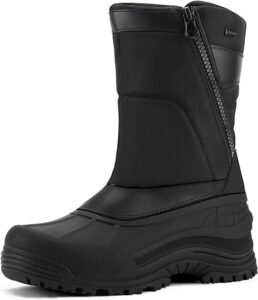
Footwear
Proper footwear is crucial for maintaining stability on slippery surfaces and protecting your feet from rocks and debris. Kayak shoes with grippy soles are ideal for warm-weather kayaking. They offer good support and protection.
Neoprene booties are excellent for colder water conditions. They provide insulation and protect your feet from cold water exposure.
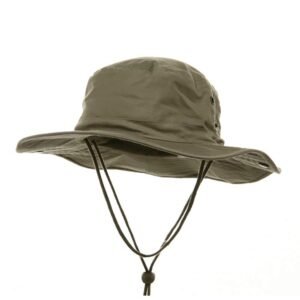
Headgear
Wide-brimmed hats or caps shield your face from the sun and prevent sunburn. Beanies or skull caps are essential for maintaining head warmth in cooler spring weather.
If you’re kayaking in whitewater conditions, wearing a helmet is crucial for head protection against rocks and obstacles.
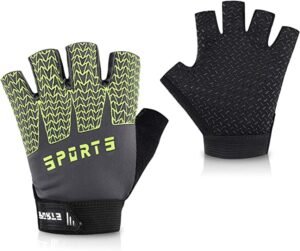
Gloves and Hand Protection
Kayaking requires good finger dexterity to control your paddle and maintain a secure grip. Gloves should provide warmth without compromising your ability to handle your paddle effectively.
Neoprene gloves are an excellent choice for spring kayaking. They offer insulation and maintain dexterity. Paddling gloves often have textured palms for better grip on wet paddles.
Sun Protection
Sun protection is paramount when kayaking in spring, as the combination of water and sun exposure can lead to sunburn and discomfort. Here are key elements to consider for effective sun protection:
Sunscreen and Sunblock
The reflective surface of water intensifies UV radiation, increasing the risk of sunburn. Prolonged sun exposure without protection can lead to skin damage and health concerns. Choose a broad-spectrum sunscreen or sunblock with a high SPF rating.
Apply sunscreen generously to all exposed skin, including your face, neck, arms, and legs. Reapply sunscreen every two hours or more frequently if you’re sweating or getting wet. Don’t forget vulnerable areas like the tops of your feet, ears, and the back of your neck.
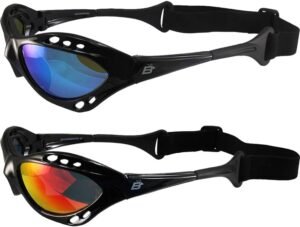
Sunglasses
Polarized sunglasses are essential for reducing glare from the water’s surface, enhancing visibility, and reducing eye strain. Look for sunglasses with UV protection to shield your eyes from harmful sun rays.
Kayaking sometimes involves quick movements or capsizing, which can lead to losing your sunglasses in the water. Attach floating sunglass straps to your glasses to ensure they stay with you even if they fall into the water.
Neck Gaiters and Buffs
Neck gaiters and buffs are versatile accessories that can be worn in various ways to protect your neck, face, and head from the sun. They also provide an extra layer of warmth and wind protection, making them suitable for cooler spring mornings.
Sun protection is not only about avoiding immediate discomfort but also about safeguarding your skin and eyes from long-term damage.
By applying sunscreen and choosing the right eyewear and accessories like neck gaiters and buffs, you can enjoy the beauty of spring kayaking while minimizing the risks associated with sun exposure. Don’t underestimate the power of sun protection – it’s an essential part of your kayaking attire.
Safety Gear
Safety should always be a top priority when kayaking, and the right safety gear is crucial to ensure your well-being on the water. Here’s what you need to know about essential safety gear for spring kayaking:
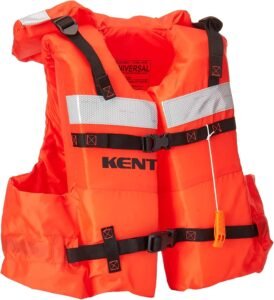
Personal Flotation Devices (PFDs)
Opt for a PFD specifically designed for kayaking. Look for one with a comfortable fit that allows for freedom of movement. PFDs often come with different buoyancy ratings, so select one that matches your body weight and the type of water you’ll be paddling in.
For your PFD to perform optimally, you need to wear it correctly. Adjust the straps to ensure a snug fit without restricting your movement or breathing. Fasten all buckles and zippers securely. Also, Make sure the PFD is in good condition, with no rips or tears, and regularly inspect it for any signs of wear.
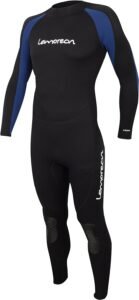
Drysuits and Wetsuits
In early spring when water temperatures are cold, a drysuit or wetsuit provides necessary thermal protection. Drysuits offer full-body waterproofing, while wetsuits provide insulation through neoprene material.
In extremely cold water conditions, choose a dry suit. Ensure your dry suit has waterproof seals at the wrists and ankles. In milder spring conditions, you can go for a wetsuit. The thickness of the neoprene should correspond to the water temperature.
Personal Safety Equipment
Carry a whistle attached to your PFD for signaling in case of emergencies. If you’re paddling in low-light conditions, ensure you have a waterproof flashlight or LED light for improved visibility. Communication devices such as waterproof two-way radios or mobile phones in waterproof cases can be invaluable for calling for help.
Accidents can happen, and being prepared is essential. Carrying safety gear can make a difference in critical situations. Always inform someone of your kayaking plans, including your expected return time and route, before heading out. This provides an additional security.
Remember that safety gear is not just a formality – it can save lives. Before every kayaking adventure, ensure you have the appropriate PFD, clothing, and personal safety equipment for the conditions you’ll be facing. Being well-prepared and knowledgeable about how to use your safety gear is essential for a safe and enjoyable spring kayaking experience.
Tips for Staying Dry and Warm
Staying dry and warm is crucial for a comfortable and safe spring kayaking experience. Here are some tips to help you achieve this.
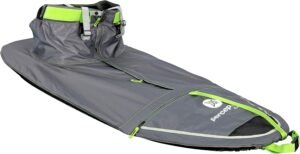
Kayak Skirts
Kayak skirts are designed to create a waterproof seal between your body and the cockpit of the kayak. They effectively keep water out of your kayak, ensuring you stay dry and warm. Skirts also protect against wind, preventing cold air from chilling you on the water.
Ensure that the skirt is compatible with the size and shape of your kayak’s cockpit. Manufacturers often provide compatibility charts. Look for a skirt with durable, waterproof material and an adjustable waistband or bungee cord for a secure fit.
Skirts come in different styles, including neoprene and nylon. Neoprene skirts provide a tighter seal but can be less breathable, so choose based on your preferences and the conditions you’ll be kayaking in.
Paddle Drips and Splashes
Proper paddling techniques can help minimize paddle drips and splashes. Keep your paddle close to the surface during strokes to prevent water from dripping into the cockpit. Learn effective bracing techniques to avoid capsizing, which can lead to more significant water entry.
Paddle leashes are essential for securing your paddle to the kayak. This prevents the paddle from floating away if you accidentally drop it. Ensure the leash is appropriately attached to both your paddle and kayak.
Test it to make sure it can withstand tugs and pulls. By using a kayak skirt, maintaining good paddle technique, and securing your paddle with a leash, you can significantly reduce the amount of water that enters your kayak.
This not only helps keep you dry but also contributes to a more comfortable and enjoyable spring kayaking experience.
By carefully selecting the right apparel, including paddling tops, bottoms, footwear, headgear, and gloves, you can ensure that you’re well-prepared for the challenges and conditions you may encounter during spring kayaking.
This thoughtful approach will enhance your comfort and safety while allowing you to fully enjoy the beauty of the season on the water.

